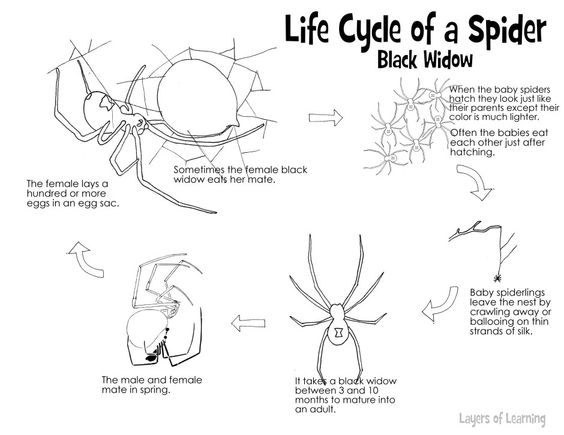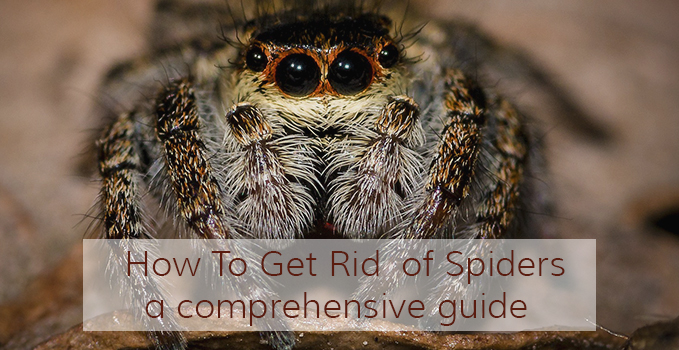
As you have learned from your grade school science class, spiders are not insects; they are air-breathing arthropods that have eight legs and are a part of the class Arachnid in the subphylum Chlecerata. Unlike the comic books and the movie franchises, spiders are not your friendly neighbors.
In fact, they have fangs that can leave significant bite marks on your skin and can poison you too. What’s more, they live inside your house and infest your basement, attic, or garage.
Although spiders eat insects that are considered pests in the house, they are also pests themselves. They thrive in the corners and crevices of your home, and they may bite you without warning whatsoever. In result, you may experience nausea, fever, itching, etcetera. To avoid this situation, read through this guide to learn how to get rid of spiders.
Contents
Spider Identification: A Guide to Identifying Your Pest
Types of Spiders
There are different types of dangerous spiders. Some of the most common types of house spiders that have venomous bites include the brown recluse, the black widow, the wolf spider, the bamboo spider, the camel spider, the hobo spider, and the wind spider. Knowing how to get rid of spiders that are poisonous is a challenge in and of itself.
Brown Recluse Spider
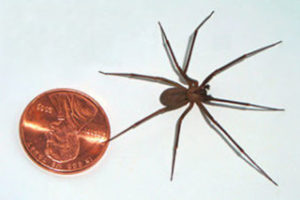 The brown recluse spider, scientific name Loxosceles reclusa, is often found in warm states like Arkansas, Kansas, Louisiana, Missouri, and Oklahoma.
The brown recluse spider, scientific name Loxosceles reclusa, is often found in warm states like Arkansas, Kansas, Louisiana, Missouri, and Oklahoma.
It also thrives well in some parts of eastern Texas and in a few colder states in the West Coast. This species is a brown and black spider, and you can identify it by the dark marking on its back, which gained it its nickname the “Violin”. It can grow up to an inch long and is usually not aggressive.
The brown recluse spider builds a loose and sticky web that is mostly of a white or grayish color. It chooses spots in the house that are dry and undisturbed. For example, you may find a brown recluse web in the attic or the basement, in old cardboard boxes, or under unused bedframes.
The brown recluse spider, like mentioned earlier, is not an aggressive house spider. It does not attack unless threatened or is caught off-guard. When it bites, you will most likely not feel immediate pain. However, the bite will start to itch and hurt within eight hours. A red ring with a white center will form on your skin and if not treated, may blister and you may experience severe effects like nausea and fever.
Black Widow
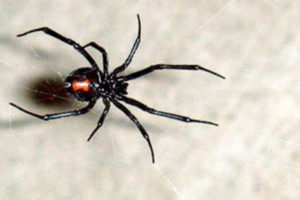 When people say they’ve seen a black widow spider, they usually mean the southern black widow, or the Latrodectus mactans. In reality, there are other types of black widow spiders including the Mediterranean black widow (scientific name Latrodectus tredecimguttatus), which has red spots on its back.
When people say they’ve seen a black widow spider, they usually mean the southern black widow, or the Latrodectus mactans. In reality, there are other types of black widow spiders including the Mediterranean black widow (scientific name Latrodectus tredecimguttatus), which has red spots on its back.
Other members of the Latrodectus genus of spiders are the red-back widow (Latrodectus hasselti, which, as its name suggests, has the red hourglass marking on its back instead of its stomach), the brown widow (Latrodectus geometricus, which has black stripes on its legs), and the red widow (Latrodectus bishopi, which is mostly red except for its black body that has red spots on it).
Anyway, a fully grown southern black widow measures about a quarter of an inch to two-thirds of an inch. It is found widely in southern and western states where the weather is mostly warm and dry.
Aside from its unique red hourglass marking, the southern black widow is also known for its good architectural skills. Its web has three structural levels—the supporting threads on the top part, the tangle threads on the middle part, and the vertical trap threads on the bottom part. Most of the time, it creates its nest on hidden spaces such as in the attic or inside storage boxes.
When it comes to its bite, the southern black widow leaves two puncture holes on the skin. These puncture holes are often painful and itchy. You may also experience a burning sensation that could spread under the skin. If you don’t treat it as soon as possible, you may experience nausea, headache, sweating, stomach pains, and muscle weakness and rigidity.
Wolf Spider
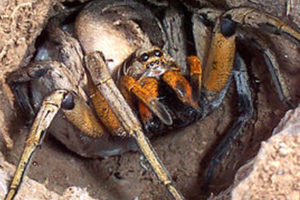 Just like the widow spider, the wolf spider is actually a term that is used to identify a whole genus of spiders called the Lycosidae. Nonetheless, the wolf spider is mostly white or brown in color with black markings all over its body and legs. Its size ranges from three to four inches, depending on the specific epithet of the spider.
Just like the widow spider, the wolf spider is actually a term that is used to identify a whole genus of spiders called the Lycosidae. Nonetheless, the wolf spider is mostly white or brown in color with black markings all over its body and legs. Its size ranges from three to four inches, depending on the specific epithet of the spider.
The wolf spider is rampant all over the country. They like burrowing in sand and gravel but you may also find their spider webs on plants. When a wolf spider bites, it may tear the skin and cause bleeding. It is painful and red and may swell. In rare occasions, the bite may also cause tissue damage. In most cases, however, the bite will heal in ten days’ time.
Bamboo Spider
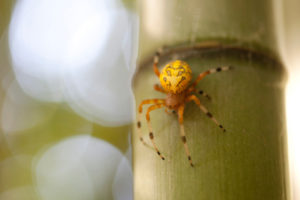 The bamboo spider, scientific name Schizotetranychus celarius, affects bamboo, rice and sugar cane plants. It is particularly small and green, which allows it to camouflage itself from predators. It is common in the Pacific Northwest region, or wherever the aforementioned plants can be found.
The bamboo spider, scientific name Schizotetranychus celarius, affects bamboo, rice and sugar cane plants. It is particularly small and green, which allows it to camouflage itself from predators. It is common in the Pacific Northwest region, or wherever the aforementioned plants can be found.
Bamboo spiders are not known to be aggressive. However, if you want to remove them from your property, they usually build their nests on the plants that they infest.
Camel Spider
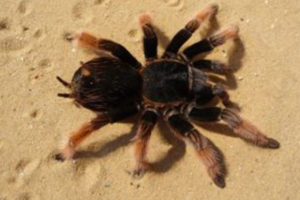 The camel spider, scientific name Solifugae, is another family of spiders. It usually has an elongated sand-colored body which helps it thrive and move in the desert. The camel spider is found in places with extremely warm and dry climates like in New Mexico, Texas and Utah. Its size varies widely, from 2 inches to 8 inches in length. They do not spin webs.
The camel spider, scientific name Solifugae, is another family of spiders. It usually has an elongated sand-colored body which helps it thrive and move in the desert. The camel spider is found in places with extremely warm and dry climates like in New Mexico, Texas and Utah. Its size varies widely, from 2 inches to 8 inches in length. They do not spin webs.
The camel spider has large jaws that can significantly wound a person when bitten. However, this family of spiders aren’t poisonous. Therefore, your only concern should be to treat the wound and avoid infections.
Hobo Spider
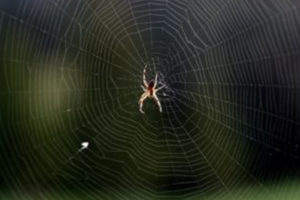 The hobo spider, scientific name Eratigena agrestis, has a brown body with yellow markings on its back and abdomen. Just like the bamboo spider, it is found in the Pacific Northwest region and is usually nested in places where people cannot see them. You may find its funnel-like web on the back of big pieces of furniture, in the corners of closets and under baseboards.
The hobo spider, scientific name Eratigena agrestis, has a brown body with yellow markings on its back and abdomen. Just like the bamboo spider, it is found in the Pacific Northwest region and is usually nested in places where people cannot see them. You may find its funnel-like web on the back of big pieces of furniture, in the corners of closets and under baseboards.
In average, the hobo spider only grows up to about a half of an inch and is aggressive and will bite if threatened. The bite will take a while to get noticed, but it eventually becomes painful and forms a purplish red blister that can further result to a rash. Moreover, severe effects of a hobo spider bite include breathlessness, nausea, fever, high blood pressure, and muscle pain.
A Spider’s Life Cycle
The life cycle of spiders begins when a fully grown female spider lays its eggs in a dry and safe place of its choosing. It lays about a thousand eggs in each cycle, and then it spins a silk egg sac to keep the eggs warm and to protect them from cracking before they hatch.
When the eggs have hatched, the life cycle proceeds to the second stage, which is the spiderling stage. Some spiderlings can survive on their own right after hatching, but others jump onto the mother spider’s back until they are ready to make it on their own. If they choose to stay with the mother, she will feed them and carry them around on her back until they grow big enough to protect and mobilize themselves.
The last stage of a spider’s life cycle is the adult stage, wherein it produces eggs and takes care of its spiderlings. However, some spiders die right after their spiderlings hatch, and when this happens, the weak members of the group may die as well.
What Attracts Spiders to My House, Basement, or Car?
 There are multiple reasons as to why spiders are boarding in your house, basement or car. The first and most common reason of all is that you have dark, clustered, and undisturbed spaces, such as the basement, the attic or the garage. Storage boxes and old furniture are ideal homes for spiders. They choose to live in these spaces because their webs and nests are hidden and secure.
There are multiple reasons as to why spiders are boarding in your house, basement or car. The first and most common reason of all is that you have dark, clustered, and undisturbed spaces, such as the basement, the attic or the garage. Storage boxes and old furniture are ideal homes for spiders. They choose to live in these spaces because their webs and nests are hidden and secure.
Another reason why spiders are dwelling in your home may be the presence of other insects. If there are other insects in your house or car from which a spider can feed off of, it becomes a rich hunting ground that allows the spiders to thrive. The presence of other insects in your house can be attributed to uncleanliness and clutter. If you sweep and vacuum regularly, you constantly disturb spaces that are otherwise good nesting places for spiders. Therefore, you’ll reduce the chances of spider infestation in your house.
In addition, spiders may have entered your home simply because you let them in. You may have brought in potted plants and other stuff that is currently the home and nest of spiders and their eggs. To avoid this situation, make sure that you check for spider webs and egg sacs before putting a new plant or antique in your house.
How to Get Rid of Spiders?
There are a lot of different ways to remove spiders around the house. Some people choose to use chemicals that instantly eliminate the infestation once and for all. Meanwhile, others opt to find a more humane way of ousting spiders from their homes. So how do you decide on what the best way to kill spiders is? In this section, you will learn different kind of techniques and types of repellants that you can apply on your spider-infested house.
Step-By-Step Instructions On How To Get Rid Of Spiders
Step 1: Clean your home.
 Like mentioned earlier, spiders like to build their nests on places that are dark and undisturbed. If you do not clean your home regularly, it increases the likelihood of a spider infestation. They will build their nest and lay their eggs in your clutter, and they will populate your house before you even realize that they are around.
Like mentioned earlier, spiders like to build their nests on places that are dark and undisturbed. If you do not clean your home regularly, it increases the likelihood of a spider infestation. They will build their nest and lay their eggs in your clutter, and they will populate your house before you even realize that they are around.
So clean your house as often as you can. Close off storage boxes, sweep or vacuum underneath pieces of furniture, and wipe any surface that has accumulated dust. If there are parts of your house that you haven’t visited in a while, make sure to clean them as well. Remove cobwebs and egg sacs with a broom if you see them around, and set spider traps if you deem it needed.
Step 2: Deploy your repellant of choice: poison, ultrasonic, or natural repellents.
 It’s up to you to choose which type of repellant you’d like to use in your house. Some poisonous chemicals are dangerous especially if you have children or pets, so you may have to evacuate the house for a few days if you use foggers for spiders. Other options include the use of ultrasonic and natural repellants. They are less harmful than insecticides and other poisonous chemicals, if not at all, but they may not be as effective when dealing with certain types of spiders. You can learn more about these options in the next section.
It’s up to you to choose which type of repellant you’d like to use in your house. Some poisonous chemicals are dangerous especially if you have children or pets, so you may have to evacuate the house for a few days if you use foggers for spiders. Other options include the use of ultrasonic and natural repellants. They are less harmful than insecticides and other poisonous chemicals, if not at all, but they may not be as effective when dealing with certain types of spiders. You can learn more about these options in the next section.
Step 3: Prevent another infestation by cleaning and securing problem areas.
 When you do your first sweep-through, you should keep your eyes open for problem areas around the house. If you find boxes in the basement or attic that are housing spiders, make sure to throw them out. If a certain piece of furniture has egg sacs all over it, clean it up before using it again.
When you do your first sweep-through, you should keep your eyes open for problem areas around the house. If you find boxes in the basement or attic that are housing spiders, make sure to throw them out. If a certain piece of furniture has egg sacs all over it, clean it up before using it again.
If you see cracks in the drywall, the baseboards or the window, secure them and close them off. As people say, prevention is better than cure, and if you don’t want to have another infestation in your space, you should always clean and tidy up. Avoid clutter. Do not hoard. Inspect pots of plants and pieces of furniture before bringing them inside the house.
These precautions may seem big and tedious, but they also prevent an even bigger problem from happening in the future.
Types of Spider Repellants
Depending on the level of spider infestation in your house, you might need to use a particular type of spider repellant or a combination of different types. Below are some of the options that you can consider.
Sanitation
Sanitation is highly recommended in eliminating spiders from your home.
However, if you don’t know how to clean spider webs and egg sacs from your home, you might want to consider the Ettore 31028 Professional Cobweb Duster with Pole.
This product easily cleans all surfaces with its electrostatic brush and can remove cobwebs from ceilings, walls, floors, crevices and more in just a few seconds.
Insecticides
Insecticides are a common way of repelling spiders around the house. There are three types of insecticides that you can use in your home.
- dust insecticide (which is best used to treat hard-to-reach areas in crevices between baseboards and cracks on the wall),
- powder insecticide (which is mostly used for spot treatments, when you want to focus on a certain inside or outside the house) and;
- liquid insecticide (which is utilized for big areas that need thorough treatment).
If you decide to use insecticide for your home, make sure to follow the necessary precautions listed on the label. Also, if you don’t know how to properly use these chemicals, it is best if you hire an expert the job for you.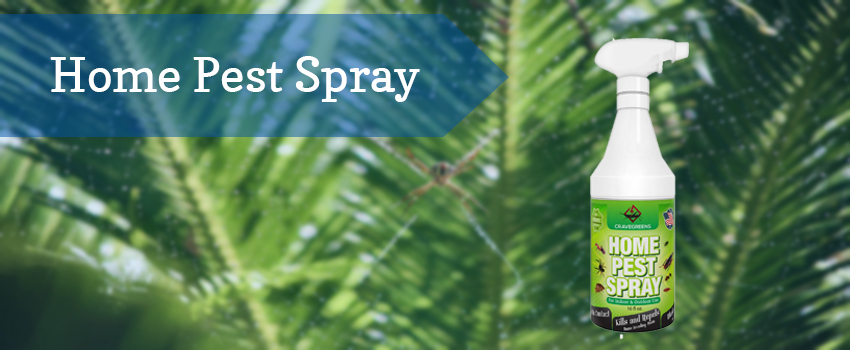
Home Pest Spray by Cravegreens
Otherwise, if you insist on doing the treatment on your own, you may want to check out the Home Pest Spray from the brand Cravegreens. You can use this product inside or outside the house to eliminate ant, roach and spider infestations. It creates a bug barrier in the perimeter that lasts up to twelve months. Moreover, this insecticide does not stain your walls and has no odor.
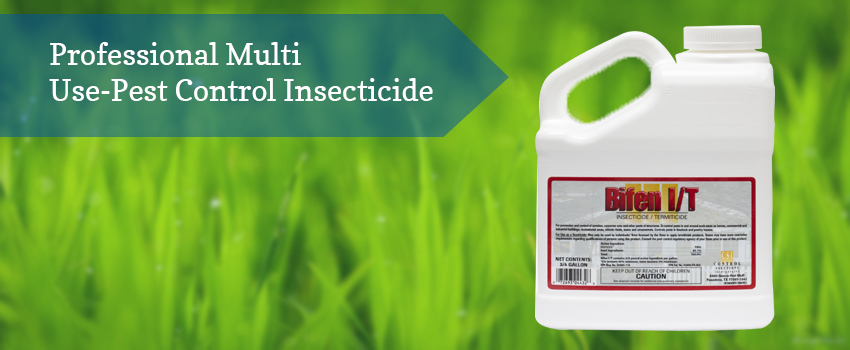
Multi Use Insecticide by Talstar
Another product that you can try is the Professional Multi Use-Pest Control Insecticide from Talstar. You can use it to eliminate seventy-five different types of pests including spiders, mosquitoes, roaches, ants, ticks, fleas and flies. It is pet-safe when dry and can be applied even in food-preparation areas. Just like Cravegreens, you can also use Talstar inside or outside the house.
Ultrasonic Spider Repellent
An ultrasonic spider repellant is an electronic device that uses sound to drive away certain types of insects and pests. An example of this device is the Cravegreens Pest Control Ultrasonic Repellant which comes in sets of four. This product comes with a lifetime guarantee if you aren’t satisfied with the results within three weeks of using it. It repels pests such as mosquitoes, roaches, spiders and rats without the harmful side effects that most chemical insecticides have. If you want to know how to get rid of spiders in as humane way as possible, ultrasonic pest repellers is a good choice.
Traps
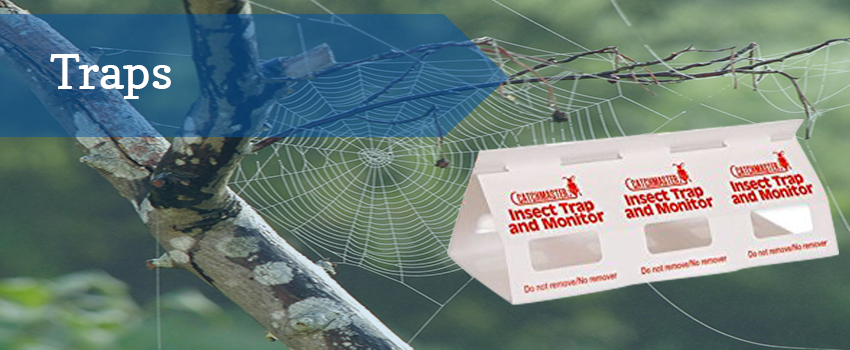
Brown Recluse Spider Traps
Another option you have is to set up traps in specific problem areas. By setting traps, you reduce the hassle and danger of applying insecticide around your house. You just have to place the traps in areas where you see spider dwellings, and then you wait for them to crawl onto the sticky pad.

Trapper Spider Trap
This 30 Brown Recluse Spider Traps from Amazon is a good investment for you. It is recommended by Kansas University and is proven effective in catching brown recluse spiders. Also, another good spider trap is the Trapper Insect Trap, also from Amazon, which includes ninety pads for bed bugs, spiders and roaches.
Natural Repellants
Natural repellants are safe alternatives to man-made insecticides. However, there are certain natural products that are claimed to be effective spider repellants but have no scientific proof of the fact – although plenty of people swear by them (including us). These natural products include chestnuts, lemons and canola oil.

Peppermint Oil
Anyway, natural repellants are still a good option when eliminating spider infestation in your home. If you want to know how to get rid of spiders naturally, you can try and use Essentially KateS’s Peppermint Essential Oil. It not only spiders but also rodents, mosquitoes and other pests and insects. Aside from being an effective natural repellant, peppermint oil is also proven to have anti-bacterial properties that can help purify the air inside your house.
You can also create your own natural spider repellant. By putting two or three garlic cloves in a spray bottle filled with water, you now have a repellant spray that you can use for spot treatment. Tomato leaves mixed with water also serve the same purpose.
In addition, combining citronella and lemon soap dish and water makes a good spider repellant. Not only that, it also smells good. If you want to avoid the hassle of spraying this mixture around the house, you can opt for a citronella candle instead.
Other Tips On How to Get Rid of Spiders
 If you want to take additional steps on getting rid of spiders, here are other tips that you can try.
If you want to take additional steps on getting rid of spiders, here are other tips that you can try.
- Keep lights open. Like mentioned earlier, spiders dwell on dark and undisturbed places. If you keep the light open in your room, you will reduce the risk of getting bitten by the spider.
- Remove cracks and crevices. Spiders can easily nest and breed inside cracks and crevices on the wall, floor or ceiling. If you want to prevent infestation, patch up any holes where spiders can easily enter and live in. Fix broken windows and doors as well. Prevention is only successful if you can keep them out of your house. Otherwise, they will just find ways to come in and nest in your space.
- Use eucalyptus sprigs. Just like citronella, eucalyptus is a good natural repellant that you can mix with water and use as spray. It smells good and keeps the spiders away.
- Create your homemade spider repellant. Killing spiders can be as easy as mixing salt and water. Place your saline solution in a spray bottle and use it for spot treatments.
- Essential oils like lavender, cinnamon, citrus and tea tree are not just for aromatherapy. They can also be used to repel insects and spiders in your house. If you want an easier way to utilize these oils, you can always choose to purchase scented candles.

